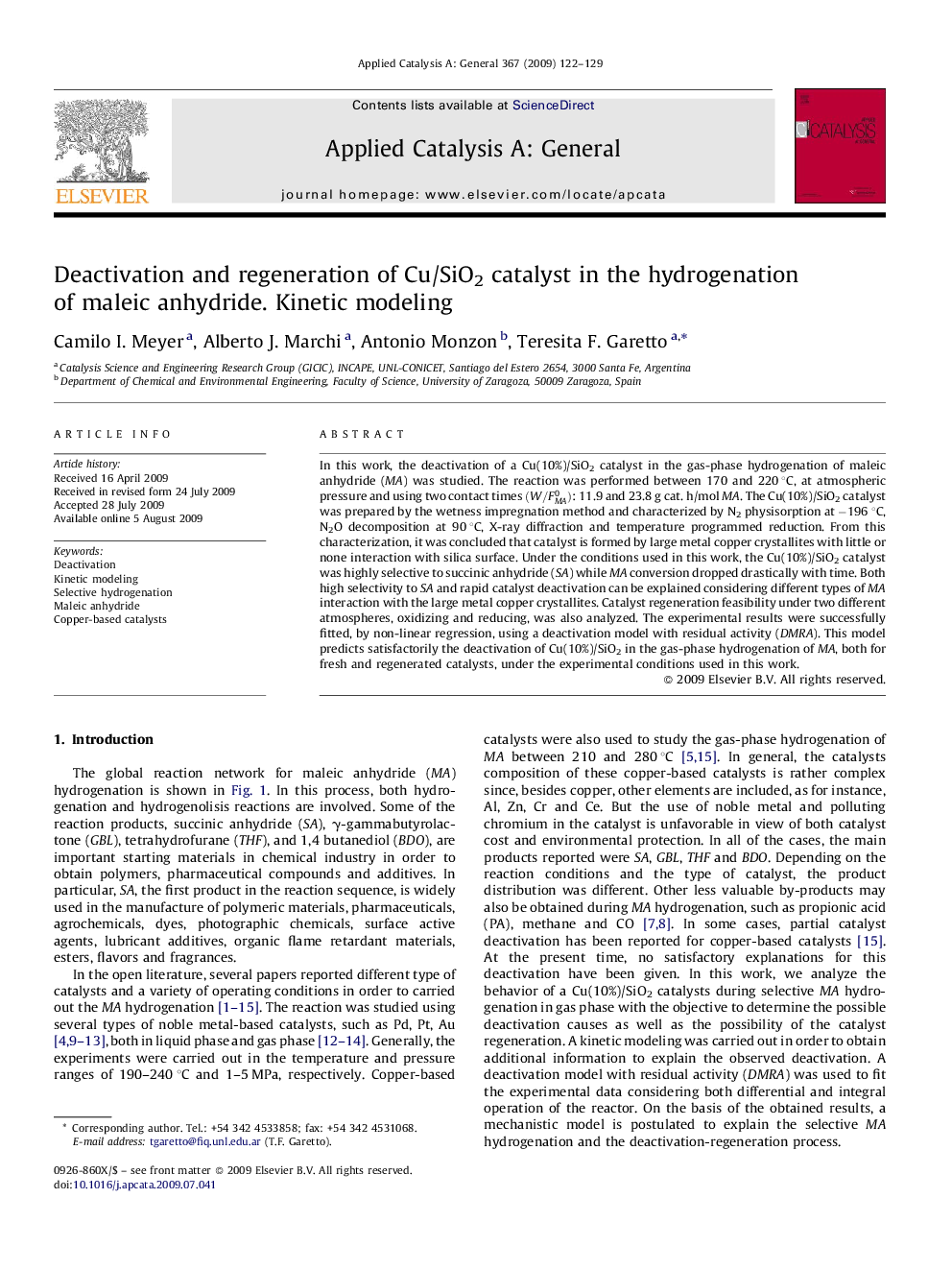| Article ID | Journal | Published Year | Pages | File Type |
|---|---|---|---|---|
| 42441 | Applied Catalysis A: General | 2009 | 8 Pages |
In this work, the deactivation of a Cu(10%)/SiO2 catalyst in the gas-phase hydrogenation of maleic anhydride (MA) was studied. The reaction was performed between 170 and 220 °C, at atmospheric pressure and using two contact times (W/FMA0): 11.9 and 23.8 g cat. h/mol MA. The Cu(10%)/SiO2 catalyst was prepared by the wetness impregnation method and characterized by N2 physisorption at −196 °C, N2O decomposition at 90 °C, X-ray diffraction and temperature programmed reduction. From this characterization, it was concluded that catalyst is formed by large metal copper crystallites with little or none interaction with silica surface. Under the conditions used in this work, the Cu(10%)/SiO2 catalyst was highly selective to succinic anhydride (SA) while MA conversion dropped drastically with time. Both high selectivity to SA and rapid catalyst deactivation can be explained considering different types of MA interaction with the large metal copper crystallites. Catalyst regeneration feasibility under two different atmospheres, oxidizing and reducing, was also analyzed. The experimental results were successfully fitted, by non-linear regression, using a deactivation model with residual activity (DMRA). This model predicts satisfactorily the deactivation of Cu(10%)/SiO2 in the gas-phase hydrogenation of MA, both for fresh and regenerated catalysts, under the experimental conditions used in this work.
Graphical abstractThe deactivation of Cu/SiO2 catalyst in the gas-phase hydrogenation of maleic anhydride (MA) into succinic anhydride (SA) was studied (see pictogram). The experimental data were satisfactorily fitted using a deactivation model with residual activity (DMRA). According to the DMRA fitting and the possible MA-Cusup0 interactions, is possible to explain: 1) the high selectivity to SA; 2) the activity decay with time; 3) the catalytic behavior after regeneration.Figure optionsDownload full-size imageDownload as PowerPoint slide
